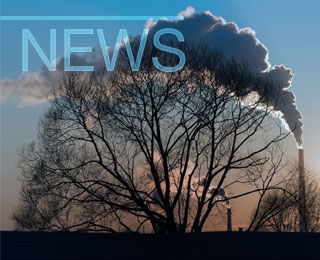Bernard Kasriel, chief executive of Lafarge, the French cement company, says he has no option but to work with others to reduce the corporate impact on the environment. If the cement business is not a "real hazard" to the environment, he acknowledges that it is "a nuisance": quarrying the raw materials affects local communities and habitats and the kilns contribute 5 per cent of the world’s man-made carbon dioxide emissions.
It is for this reason that Lafarge, the world’s largest cement producer, has struck up a relationship with WWF, the conservation group. For the past five years, the company and the pressure group have worked to limit Lafarge’s impact on the environment. It has not always been an easy union.
The tie-up began when Lafarge approached WWF for help with a special Millennium project. But the two organisations soon realised there was a mutual benefit in continuing a dialogue. "Given this was a company with a massive footprint - especially in terms of carbon dioxide emissions," says Jean-Paul Jeanrenauld, head of WWF’s business industry relationships division, "it was clear we should be looking to come up with a programme for change."
It was not a straightforward meeting of minds. "There were high risks for us and for them," says Mr Jeanrenauld. "As a company, the minute you go in with an NGO, you attract flak. We were accused of getting into bed with the devil and internally a lot of colleagues felt it was a high-risk strategy. Some people felt it was completely the wrong way to go. There are still people who feel uncomfortable with it."
Lafarge agreed to pay WWF $1.1m (GBP570,000) a year for five years, more than a third of which went towards the conservation group’s general work rather than projects with the cement group. This prompted accusations that WWF had sold out to the company. Mr Kasriel says that there would have been no point doing a deal with the WWF if it had simply been about public relations. "If it was purely about reputation, it would flash back negatively on us," he says. "If it was done just to get the label, it would be seen as a trick."
For his part, Mr Jeanrenauld says the money is a small part of the conservation group’s total income (which was more than $74m in 2003). And he insists that the tie-up has achieved environmental improvements - which is WWF’s raison d’etre. "I would say that without the partnership, they wouldn’t have public targets for carbon dioxide reductions and they wouldn’t have implemented a programme for achieving it," he says. "I think they would be less aware of the implications of ecological quarry restoration, and they wouldn’t be so engaged in sustainable construction."
The relationship was tested almost to destruction during a dispute over the Lingeraby quarry on the Scottish isle of Harris in the Outer Hebrides - one of the country’s designated scenic areas. Redland, a Lafarge subsidiary, had been trying to get planning permission for a huge "superquarry", and the issue came to a head in 2002. WWF’s UK division joined other environmental groups in opposing the quarry. After a prolonged dispute, including appeals against court decisions, Lafarge finally gave up in April 2004.
Mr Kasriel has two messages for other business leaders: "First, if your basic beliefs are contradictory, don’t do it. Second, if you’re only doing it for advertising, it won’t work either." Original report Financial times, London.
